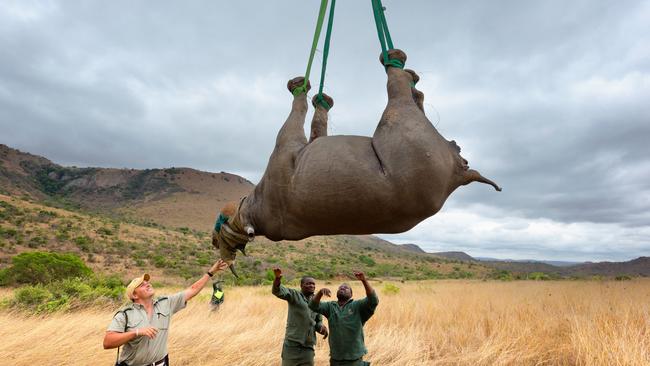Upside down is only way to fly for rhinos
Dangling rhinoceroses upside down is the safest way to move them, researchers have found.

Dangling rhinoceroses upside down is the safest way to move them, researchers found after tests in Namibia using a dozen of them and a crane.
Moving rhinos to new and often remote locations has become a key tool in ensuring their survival, to keep them out of the reach of poachers and to distribute the animals across a range of habitats to maintain healthy gene pools.
Conservationists have viewed suspending the 1400kg beasts from a helicopter as a last resort, when journeys by road are impossible. Yet studies of endangered black rhinos in the Waterberg Plateau National Park discovered that they fared much better with being hung upside down from a crane, to mimic a helicopter, than lying on their side as they would for a road trip.
The team from Cornell University in the US had predicted that inverting the animals would exacerbate the perilous effects of the drugs used to sedate them. Horses moved upside down suffer from impaired breathing because of heavy abdominal organs pushing against the lungs and chest cavity, but the test rhinos responded quite differently, the researchers observed.
Robin Radcliffe, an author of the Cornell study, said: “It actually improved ventilation, albeit to a small degree, over rhinos lying on their sides.”
The findings, published in the Journal of Wildlife Diseases, have cheered conservationists since the threat to rhinos from poachers is gaining momentum.
Africa has two rhino species, black and white, and both are targeted for their horns. In Asia they sell for up to $98,000 per kilo as a status symbol or for use in traditional medicines.
At the start of the 20th century half a million rhinos roamed Africa and Asia. Of the African species, Save the Rhino International estimates that about 5500 black and 18,000 white rhinos are left in the wild.
The Times


